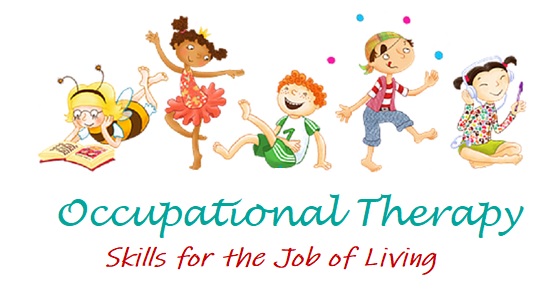
CO-SER 329 – Occupational Therapy
An Occupational Therapist specializes in the development of fine motor and visual perceptual motor skills and activities of daily living. Therapies are developed by utilizing knowledge based on medical, biological, behavioral, and therapeutic principles. The therapy goals are related directly to the student’s individual educational goals as determined by the IEP when working with students with disabilities.
Definition of Occupational Therapy
In the educational setting, Occupational Therapy addresses a student's skills in the following areas: fine motor (drawing, cutting, hand writing), visual-motor (copying designs, letters, numbers), sensory processing (appropriate responses to daily environmental activities/events), activity of daily living skills (dressing, utensil use), and motor planning (participating in novel gross and fine motor tasks).
Qualifications of the Occupational Therapist
Occupational Therapists must pass the National Board Certification Occupational Therapy exam and hold a current New York State license to practice as issued by the State Department of Education. This license must be renewed every three years with therapist documentation of continuing education. To obtain a license the Occupational Therapist must have an entry level Bachelors or Masters degree in Occupational Therapy from an accredited Occupational Therapy program as approved by the American Occupational Therapy Association. Currently entry level programs for Occupational Therapy are at the Masters level.
The therapist has knowledge of current federal and state regulations pertaining to special education and section 504. They have an understanding of the educational and medical disabilities of students. They are trained to select/administer appropriate assessment tools, to interpret those results, and to plan and implement intervention within the educational program.
Qualifications of the Certified Occupational Therapy Assistant
Certified Occupational Therapy Assistants (COTAs) must pass a National Board for Certification Exam and hold a current New York State license to practice as issued by the State Education Department. This license must be renewed every three years with therapist documentation of continuing education. To obtain certification the COTA must have a Associate's degree in Occupational Therapy as approved by the American Occupational Therapy Association.
The therapist has knowledge of current federal and state regulations pertaining to special education and section 504. They have an understanding of the educational and medical disabilities of students. They are trained to provide ongoing treatment and reassess students' skills under the supervision of an OTR.
Role of the Occupational Therapist/COTA in the Educational Setting
Therapists in the educational setting are responsible for assessing and evaluating student needs to plan for appropriate intervention. Therapists work closely with the IEP team or 504 committee. The therapist develops and implements services based on the goals developed by the team. The therapist provides information and strategies to educational personnel, students, and parents.
Therapists are not required to attend IEP meetings but have a professional obligation to provide input regarding therapy service decisions.
Referral for Occupational Therapy Services
Anyone who suspects that a student needs Occupational Therapy services may initiate a referral. The referral may be made by a teacher, parent or physician, and is directed to the child study team or CSE/504 administrator. Parental permission is required before services can be rendered. Medical prescription is required before services can be provided.
Reasons for a referral might include:
- Difficulty drawing, coloring, copying, cutting, tracing; avoidance of these activities
- Handwriting shows reversals, poor spatial organization, poor letter formation, etc.
- Lacks well established dominance
- Difficulty manipulating small objects (pegs, beads, money, etc.)
- Seems to understand directions but can't carry out task
- Appears disorganized
- Movements appear clumsy or awkward
- Difficulty manipulating fasteners (i.e. zippers, snaps, buttons, shoe laces, etc.)
- Difficulty putting on/removing coat, hat, gloves, etc.
- Difficulty manipulating eating utensils, opening containers (thermos, milk carton)
- Avoids tactile activities such as sandbox, play-doh, finger paints, etc.
- Seems to touch everything/can't keep hands to self
- Dislikes being hugged or touched
- Fearful of activities moving through space (swings, teeter totter, etc.)
- Excessive craving for swinging, bouncing, slides, merry-go-rounds
- Seems to tire easily, poor sitting posture
Evaluation may include:
- Review of pertinent medical and educational records
- Interviews with the student, parent, guardian, teacher and para-professionals
- Observations throughout the school environment
- Evaluation of fine motor/visual-motor/sensory processing skills that impact educational performance
- Standardized assessments